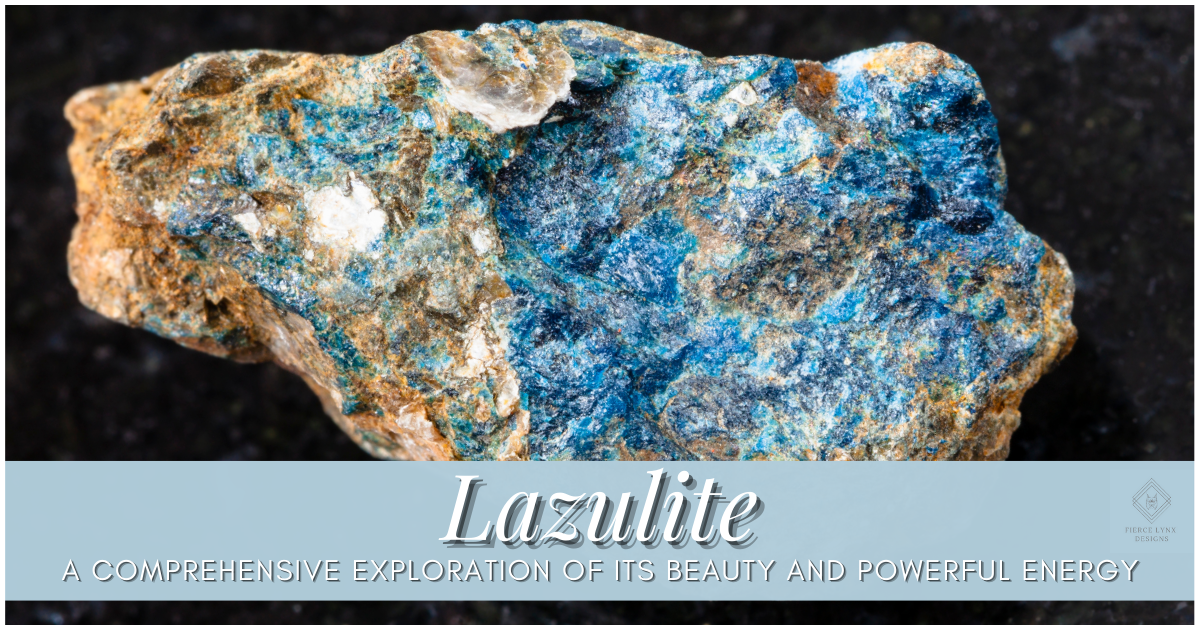
Lazulite: A Comprehensive Exploration of Its Beauty and Powerful Energy
Seeking clarity on lazulite’s allure and applications in gemology and healing? This mineral’s rich blue colour captivates collectors, while its purported healing qualities intrigue holistic practitioners. Our in-depth guide navigates lazulite’s origins, characteristics, and benefits without the myths.
Key Takeaways
-
Lazulite is a rare mineral with a captivating blue hue that is treasured in various cultures. Originating from regions like the Ural Mountains and also found in Austria, Canada, and the U.S., it is composed of aluminum, magnesium, iron, and phosphorus and created in high-grade metamorphic environments.
-
The gemstone is renowned for its visually striking blue-to-green colour variations, strong pleochroism, and rarity, which make faceted specimens highly valuable. Its mineral content influences its colour, and it possesses a monoclinic crystal structure with unique inclusions.
-
Lazulite possesses multifaceted healing properties that address physical, emotional, and spiritual well-being, including supporting immune and digestive systems, aiding mental stability, balancing chakras, and promoting spiritual growth through enhanced psychic awareness and meditation.
Unveiling the Mysteries of Lazulite
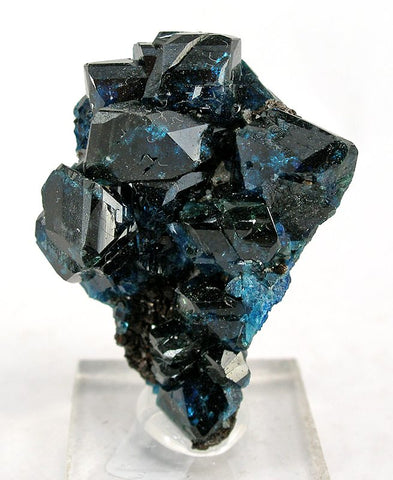
With its mesmerizing blue hues, Lazulite has a fascinating history that adds to its allure. First discovered in the Ural Mountains of Russia, this captivating gemstone has been found in various locations worldwide, including Austria, Canada, and the United States. First described in 1795 by Martin Heinrich Klaproth, it was named from the German ‘lazurstein’, meaning ‘blue stone’, or the Arabic word for heaven, reflecting its captivating blue color.
Known by several alternative names, including Blue Silicate, Blue Spar, and Azure Stone, lazulite continues to enchant gemstone enthusiasts worldwide.
Mineral Composition and Formation
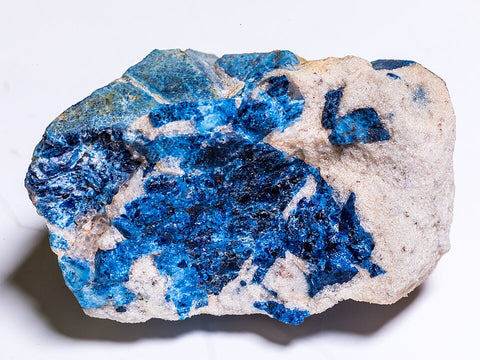
Exploring the composition of Lazulite reveals it as a rare treat for mineralogists. Lazulite is composed of:
-
Aluminum
-
Magnesium
-
Iron
-
Phosphorus
This unique blend is reflected in its chemical formula of MgAl2(PO4)2(OH)2. The formation of this relatively rare mineral is a tale of geologic transformation.
High-grade metamorphic environments are where lazulite comes to life, where aluminum-rich sedimentary rocks like shale or clay-rich rocks undergo regional metamorphism. This process involves the crystallization of minerals under extreme temperature and pressure conditions in the presence of phosphorus, creating this unique gemstone.
Mining Locations
Lazulite’s widespread presence across the globe bolsters its appeal. Beyond the Ural Mountains and Austria, lazulite has been discovered in countries such as:
-
Sweden
-
Canada
-
Madagascar
-
India
-
Brazil
In recognition of its natural abundance, the region of Yukon in Canada has even chosen lazulite as its official gemstone, a testament to its cultural significance and geologic importance.
The Visual Splendor of Lazulite

The allure of Lazulite stems from its visual splendour. Exhibiting a range of colours from azure-blue to green, with deep blue shades being the most valuable, lazulite is a feast for the eyes. Its crystal habit varies from tabular to granular, and it displays strong pleochroism, revealing different shades of blue depending on the viewing angle.
This strong visual appeal and its extremely rare nature make high-quality faceted lazulite especially valuable in the gemstone market.
Colour Variations
Lazulite’s colour variations are a spectacle to behold. Influenced by the presence of iron, magnesium, and aluminum within its crystal structure, lazulite exhibits an array of shades, from deep ocean blues to serene sky blues and even rare pink varieties. These captivating hues contribute to the gemstone’s calming visual effect, making it a truly alluring stone.

Crystal Structure and Inclusions
The unique crystal structure and inclusions of Lazulite further add to its allure. The mineral features:
-
a monoclinic and prismatic crystal structure
-
encompassing masses, grains, pyramidal, and tabular formations
-
crystals that exhibit pleochroism, causing different shades of blue to be visible from various angles
These characteristics add to the visual appeal of the physical body.
Common inclusions within lazulite crystals include healed fractures, feathers, and single or two-phase inclusions containing liquid and gas, adding another layer of intrigue to this already fascinating gemstone.
Distinguishing Lazulite from Similar Gemstones
Even with its distinct allure, lazulite often gets mistaken for similar blue gemstones like azurite, sodalite, and lapis lazuli. However, a closer look reveals that each of these stones possesses unique properties that set them apart.
Take Azurite as an example. It’s known for its deep blue colour and is a copper-based pigment. In contrast, lazulite, lacking copper content, manifests a lighter and brighter blue hue.
Similarly, sodalite, a member of the feldspathoid mineral group, typically showcases a less striking and darker blue colour compared to the bright blue hue of lazulite, a member of the phosphate mineral class.
Lazulite vs. Lapis Lazuli
When compared to lapis lazuli, another popular blue gemstone, lazulite holds its own. While both stones share a striking blue hue, pairing them together can enhance spirituality, knowledge, and intuition, offering a synergistic combination of healing energies.
So, whether you’re seeking spiritual enlightenment or simply a stunning piece of jewelry, a combination of lazulite and lapis lazuli is a choice worth considering.
Lazulite vs. Sodalite
Comparing lazulite to sodalite reveals another distinct contrast. While sodalite may have a mottled appearance and include white calcite crystals in a coarse vein pattern, lazulite typically exhibits a more uniform blue colour.
Interestingly, combining these two stones can enhance communication skills, offering an unexpected benefit of this unique pairing.
Embracing Lazulite's Healing Energies
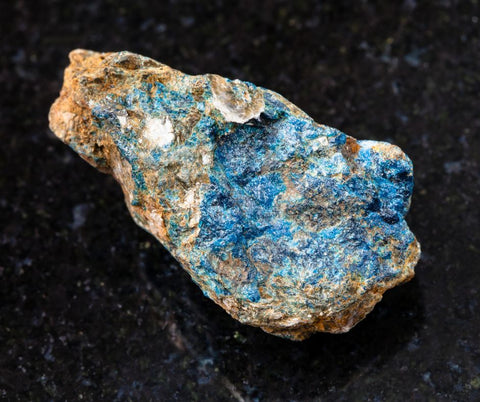
Aside from being visually striking, this stone also boasts powerful lazulite healing properties. These properties span the physical, emotional, and spiritual realms, making it a versatile tool for holistic wellness.
Physically, lazulite is believed to support the immune system, particularly through its positive effect on the lymphatic system. It can alleviate:
-
migraines
-
headaches
-
toothaches
-
eye strain
offering sensory comfort.
While many people find value in the metaphysical and healing properties attributed to stones and crystals, it's important to note that these beliefs are anecdotal and lack scientific evidence.
Physical Healing Properties
Apart from promoting general wellness, lazulite also offers specific physical healing benefits. It aids in repairing sprains and fractures and facilitates recovery from burns, bruises, and liver problems. It’s also said to contribute to digestive health by preventing stomach problems and promoting internal balance. Additionally, lazulite’s energy can break the dependence on harmful substances, making it a useful ally in overcoming negative habits associated with addiction.
Emotional Healing Properties
In the realm of emotional well-being, lazulite fosters peace, nurtures self-reflection, and revives lost confidence. It helps balance emotions and mental stability, which is crucial for maintaining a positive atmosphere and enhancing self-discipline.
By promoting mental clarity and stability, lazulite reinforces energy waves, leading to better neurological functions and mental coherence. Lazulite can be a supportive companion whether you’re navigating a challenging period or simply seeking emotional balance.
Chakra Healing and Spiritual Growth
In the spiritual sense, lazulite stands out as a beacon of growth and enlightenment. It has the following properties:
-
Balances the third eye chakra, associated with intuition, insight, and spiritual awareness
-
Leads to heightened perception and intuitive insights
-
Enhances connections to higher realms
-
Expands consciousness
-
Offers mystical knowledge, including access to Akashic records
Lazulite can serve as a powerful guide if you’re just beginning your spiritual journey or are well on your path.
Harnessing Lazulite's Metaphysical Powers

The Lazulite metaphysical properties transcend the physical and emotional spheres. This gemstone is known to:
-
Enhance psychic awareness
-
Facilitate astral travel
-
Improve dream recall
-
Promote spiritual development
The stone's aura, filled with positive energy, enhances and improves psychic awareness, deepening the understanding of conscious experiences, subconscious thoughts, and feelings in both physical and spiritual realms. It also facilitates deep meditative states and peak brain functioning.
Lazulite increases intuition by bridging the gap between the earthly and spiritual realms, facilitating psychic exploration and developing supernatural abilities.
Meditation and Grounding Techniques

Employing meditation and grounding techniques is one way to tap into Lazulite’s metaphysical powers. The calming energy of lazulite makes it an effective stone for deep meditation, inducing relaxation and emotional stability. Using lazulite during meditation can uplift and guide individuals on their spiritual journey, facilitating a stronger and clearer spiritual connection.
So, whether you’re seeking clarity or tranquillity, incorporating lazulite into your meditation practices can help you achieve deep meditative states and bring about transformative experiences.
Psychic Abilities and Spiritual Exploration
Moreover, Lazulite has several benefits, including:
-
Bolstering psychic abilities
-
Encouraging spiritual exploration
-
Resonating with the third eye chakra
-
Increasing intuitive power
-
Balancing the energies of Yin and Yang
-
Enhancing psychic abilities such as clairvoyance and ESP
It facilitates the exploration of past lives and aids in understanding the connection of these past events to present and future outcomes. Whether you’re interested in astral travel, alternate life exploration, or seeking a deeper understanding of your dreams, lazulite can be a valuable tool on your spiritual journey.
Crystal Combinations: Amplifying Lazulite's Energy
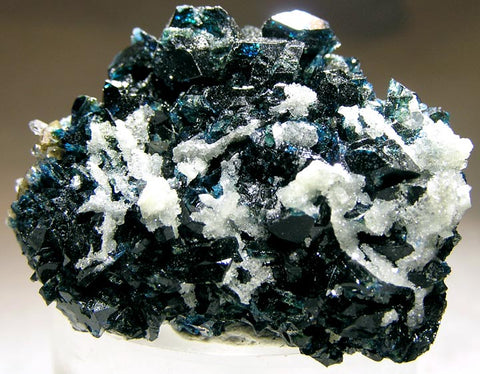
Pairing Lazulite with other stones can further magnify its energy. Combining lazulite with stones such as amethyst, clear quartz, and sodalite can significantly enhance its healing properties and amplify its energy. Each stone brings its unique properties to the mix, creating a powerful synergy that can elevate your healing and spiritual practices to new heights.
So, if you’re looking to maximize the benefits of lazulite, consider exploring these crystal combinations.
Summary
In conclusion, lazulite is indeed a gemstone of many fascinations. Its captivating blue hues, unique formation, and widespread geographical presence make it a marvel of the mineral world. But beyond its physical allure, lazulite is a powerhouse of healing, offering support for physical well-being, emotional balance, and spiritual growth. Its metaphysical properties further enhance its appeal, fostering psychic awareness, facilitating astral travel, and promoting intuitive insights.
Whether you’re a gemstone enthusiast, a spiritual seeker, or someone interested in holistic healing, lazulite offers a wealth of benefits. Its energy can uplift, heal, and guide, making it a valuable ally on your journey toward well-being and enlightenment. So, if you’re drawn to its azure allure, why not delve deeper and discover the many wonders of lazulite for yourself?
Frequently Asked Questions
What is the benefit of lazulite crystal?
Lazulite crystal offers benefits such as amplifying the energy of affirmations, enhancing the effects of subliminal audio programs, aiding in dream work, achieving deep meditative states, and tuning into other levels of reality. Incorporating it into your practices can bring about these advantages.
Is lazulite a rare mineral?
Yes, lazulite is a rare mineral that occurs in aluminum-bearing quartzites, quartz veins, and granite pegmatites. It is known for its bright blue colour and is not commonly found.
What is the meaning of lazulite?
The meaning of lazulite is "Clarity of Thought and Wisdom," deriving from the Persian and Arabic words for the stone's vivid blue colour.
Is lapis lazuli the same as lazulite?
No, lapis lazuli and lazulite are not the same. Lapis lazuli is composed of several minerals, including lazurite, while lazulite is a rare phosphate mineral composed of magnesium, iron, aluminum, and phosphate. This provides a clear distinction between the two.
Where is lazulite commonly found?
Lazulite is commonly found in various locations worldwide, including the Ural Mountains of Russia, Austria, Canada, the United States, Sweden, Madagascar, India, and Brazil.

